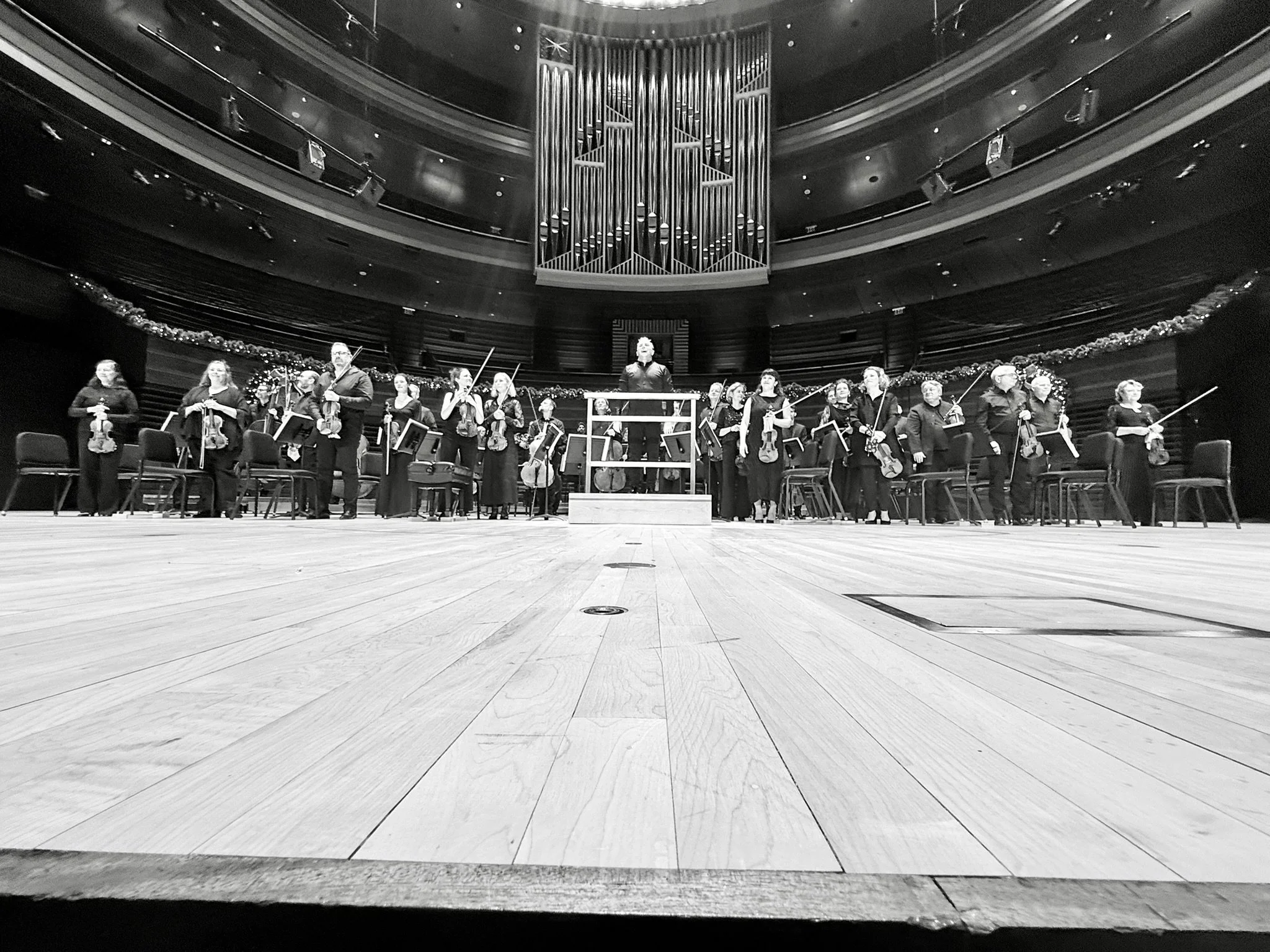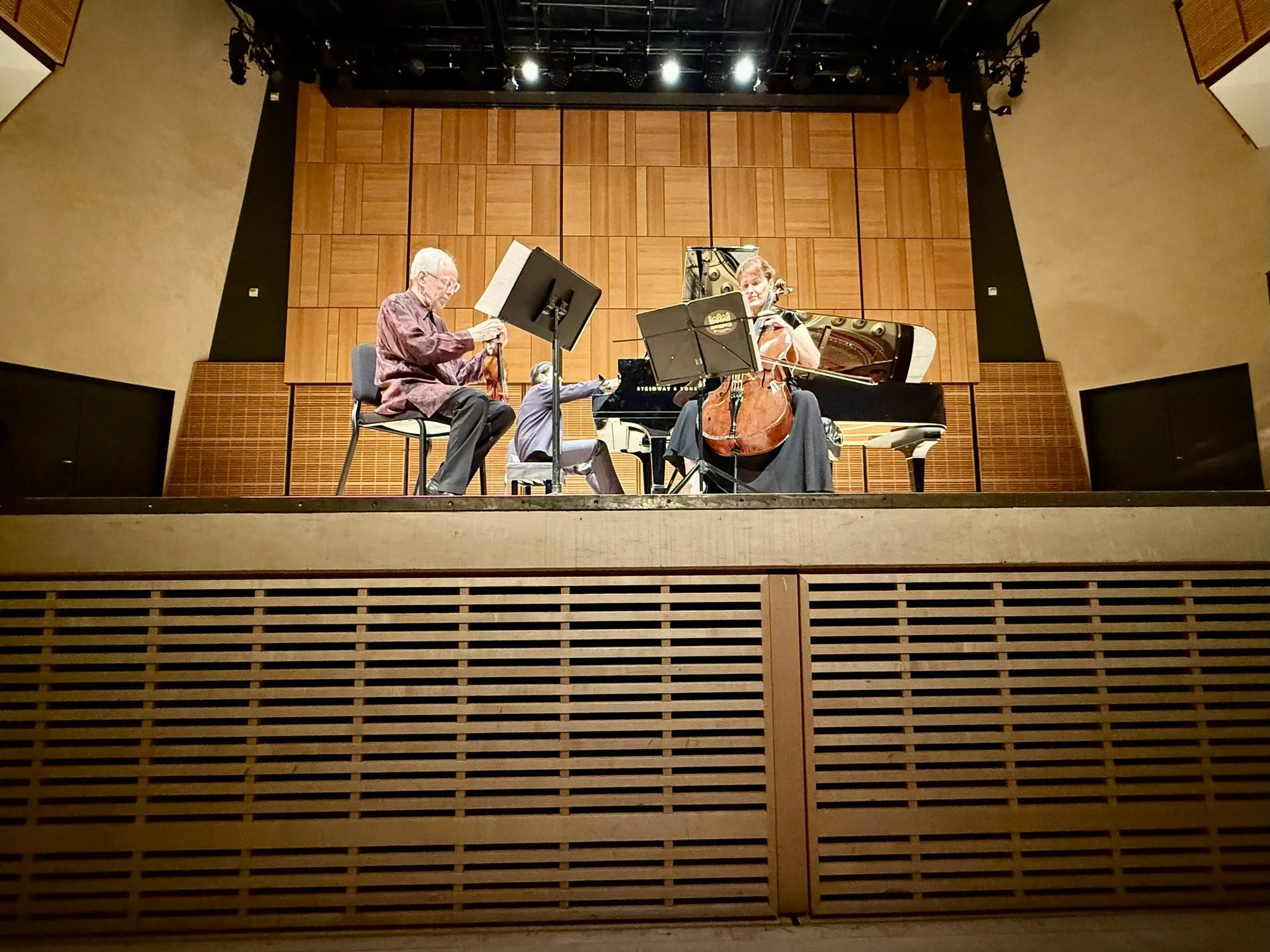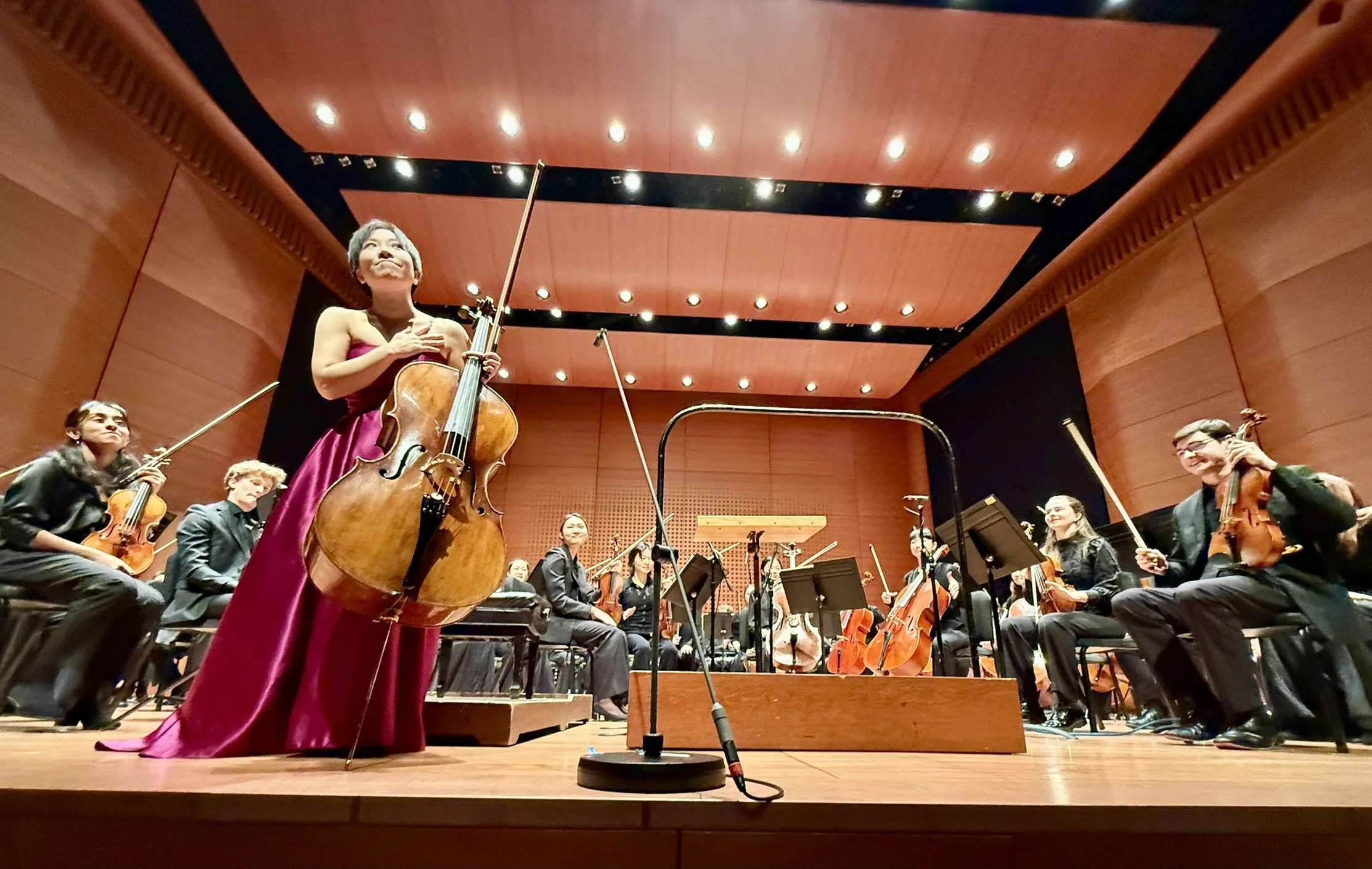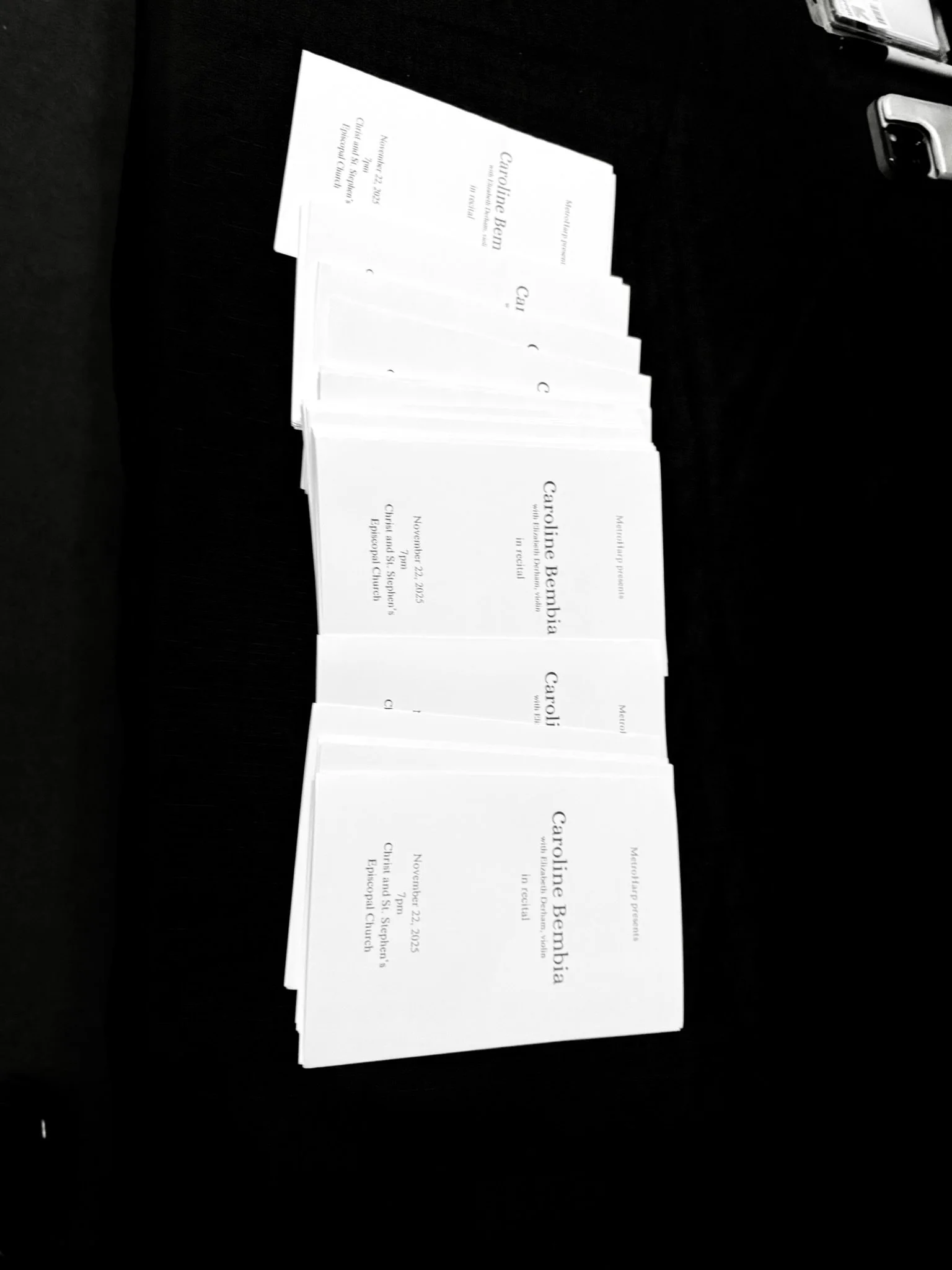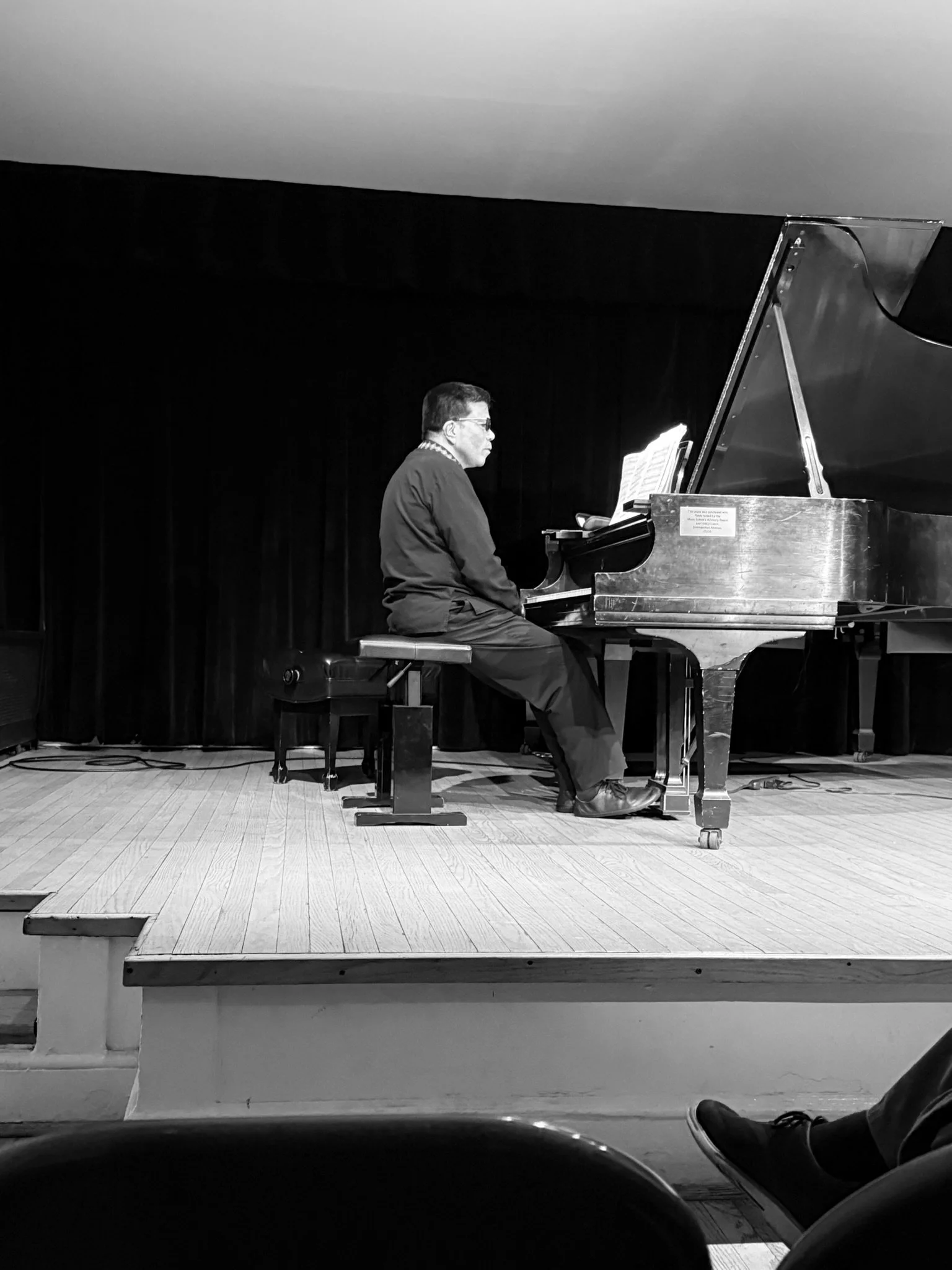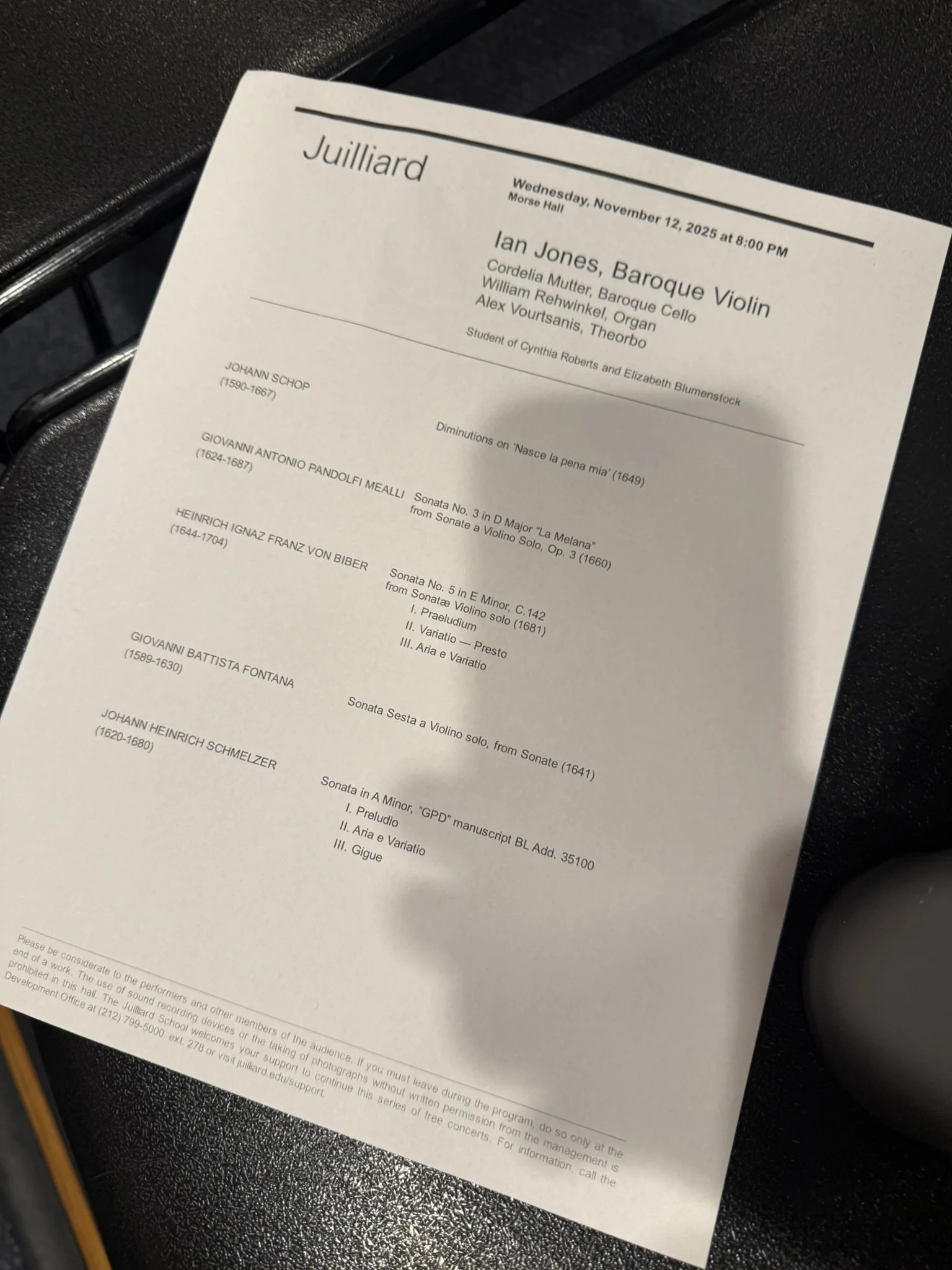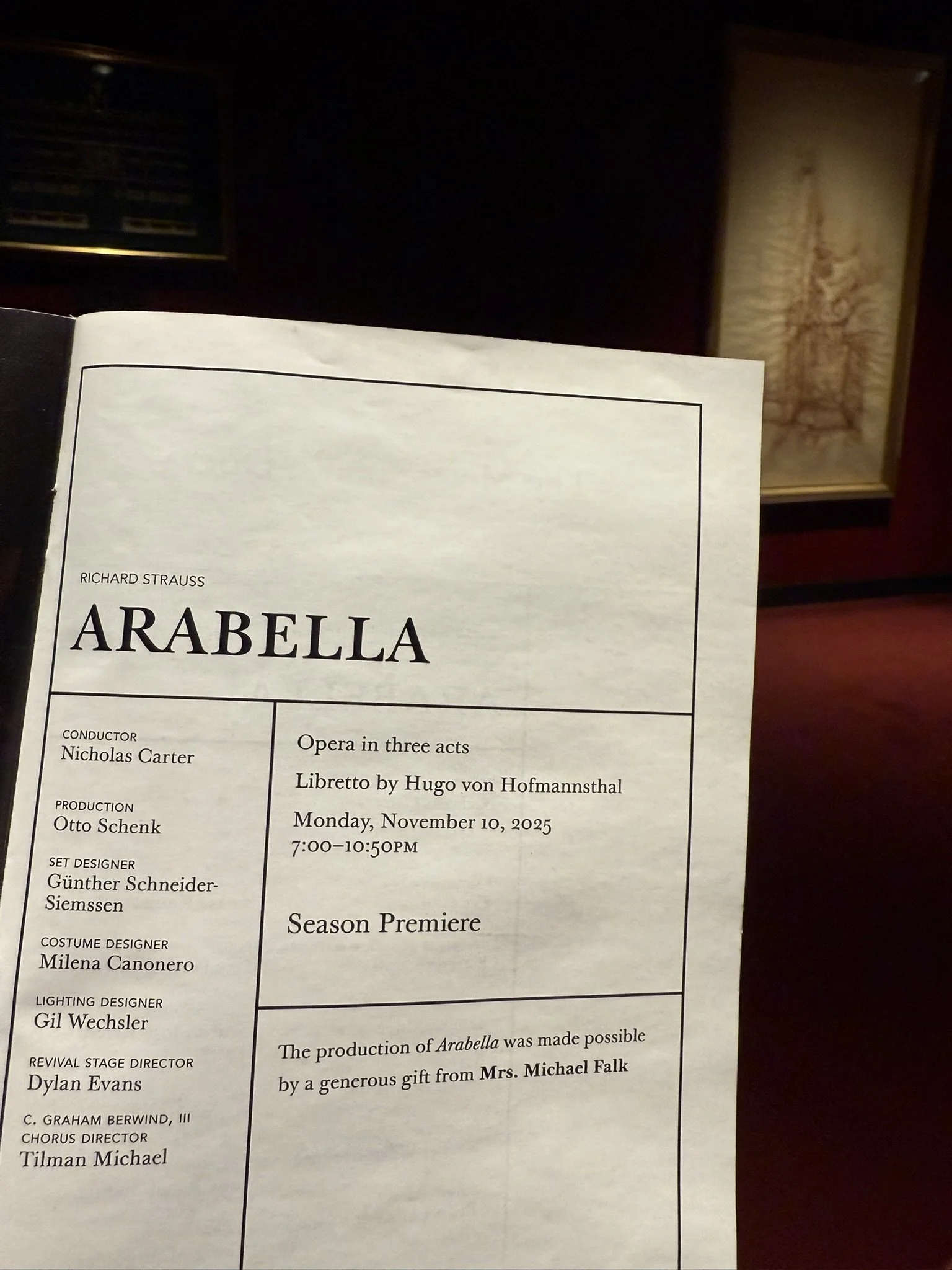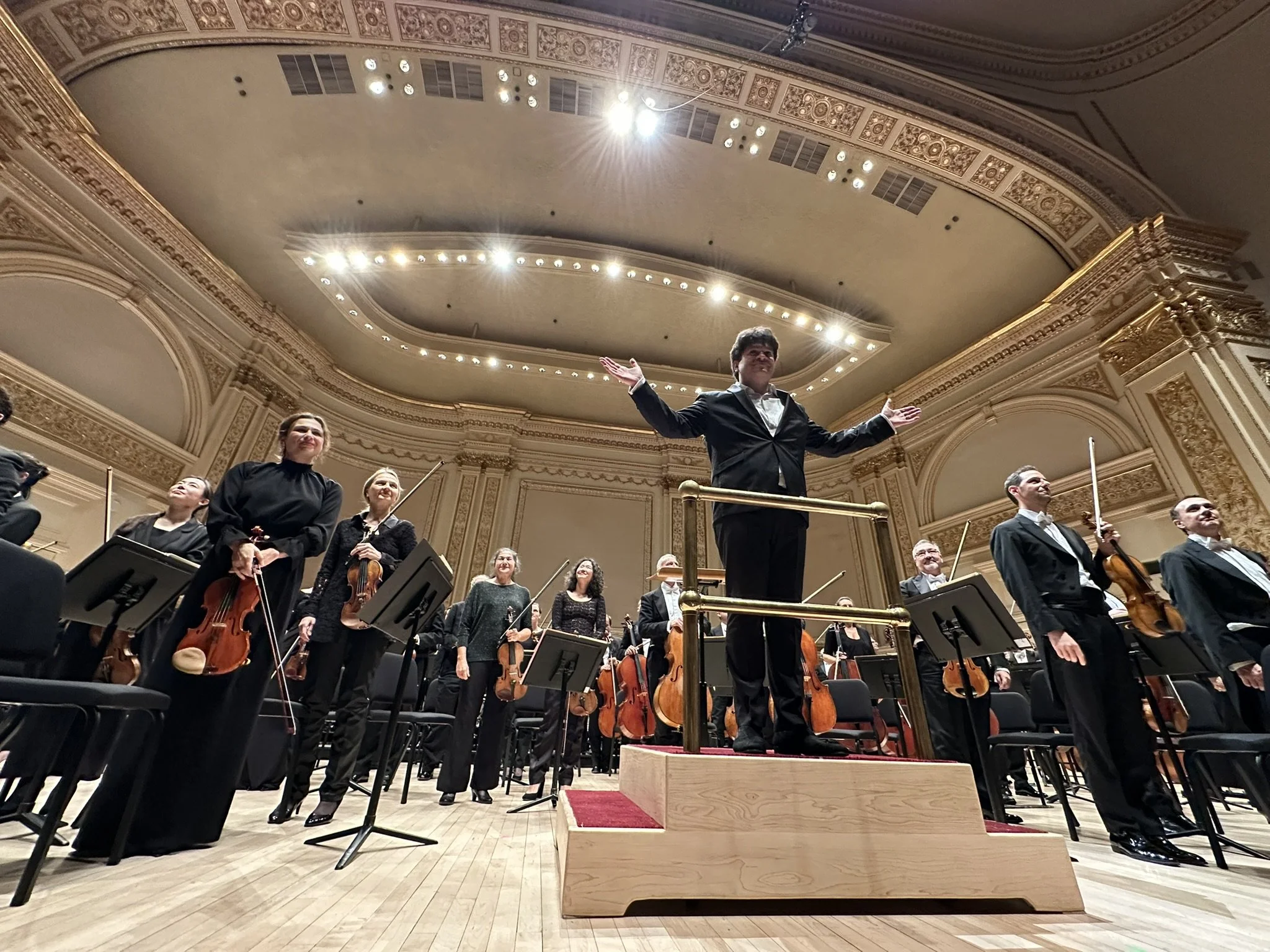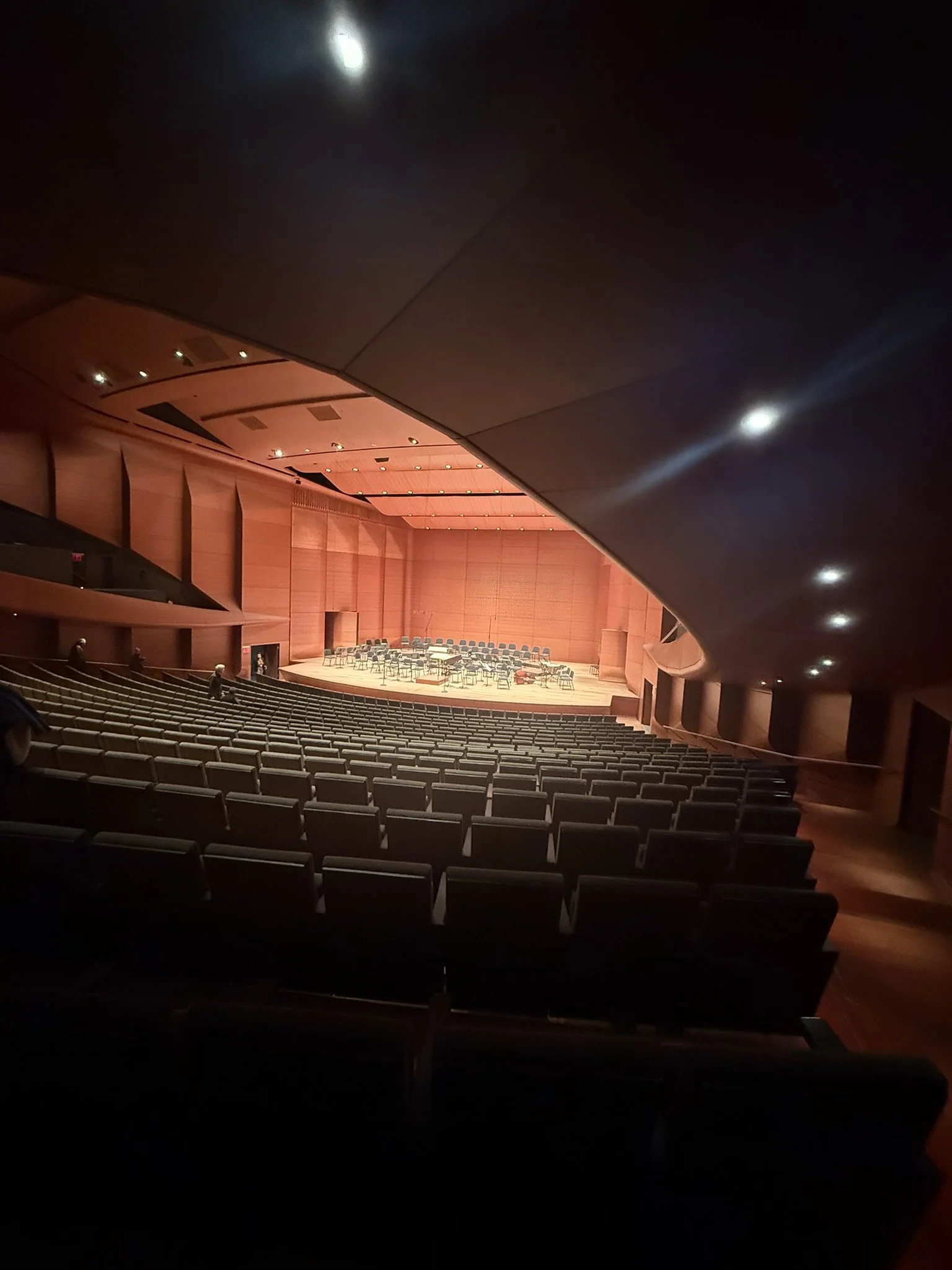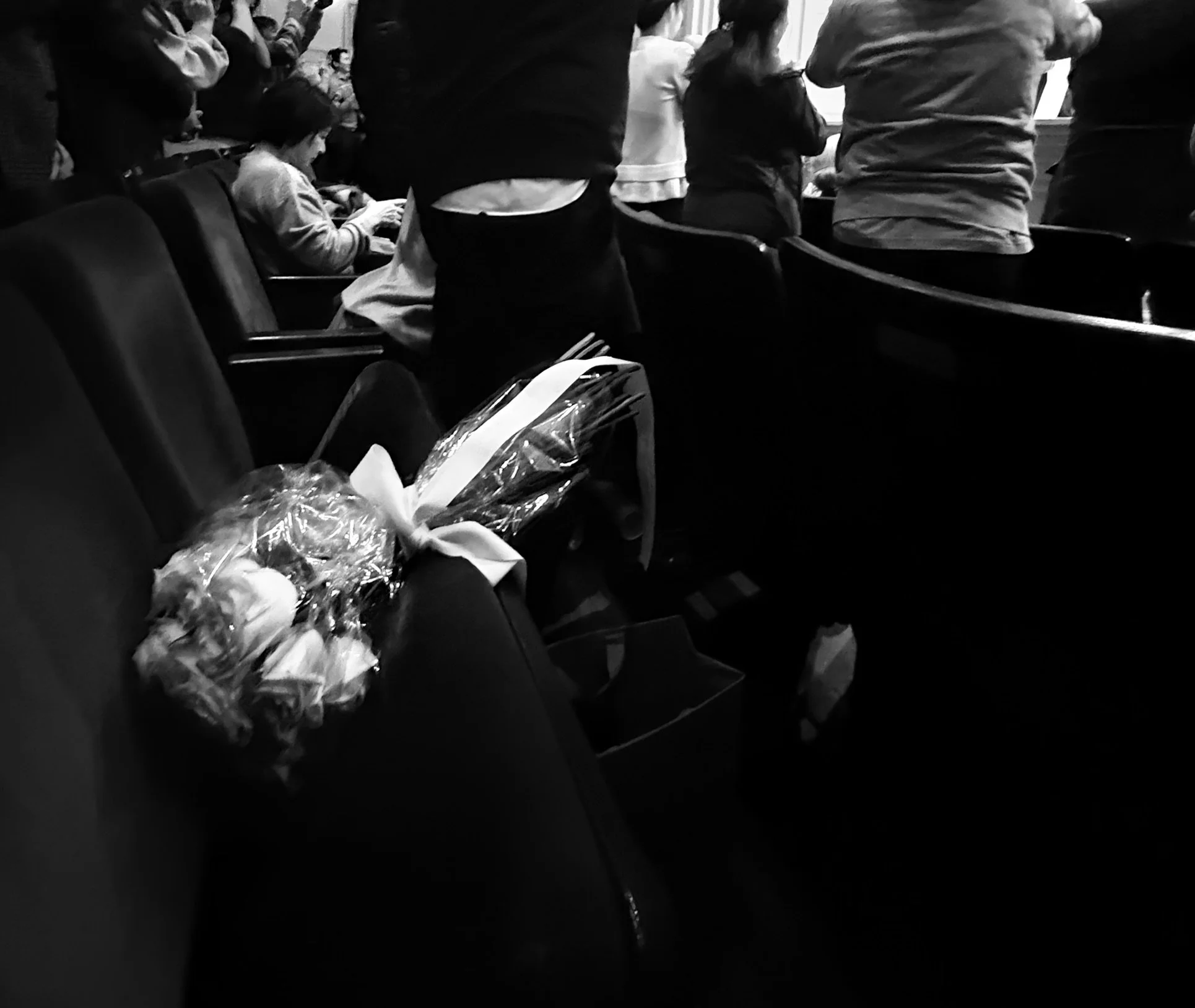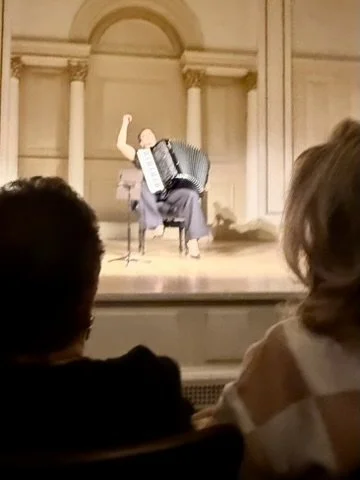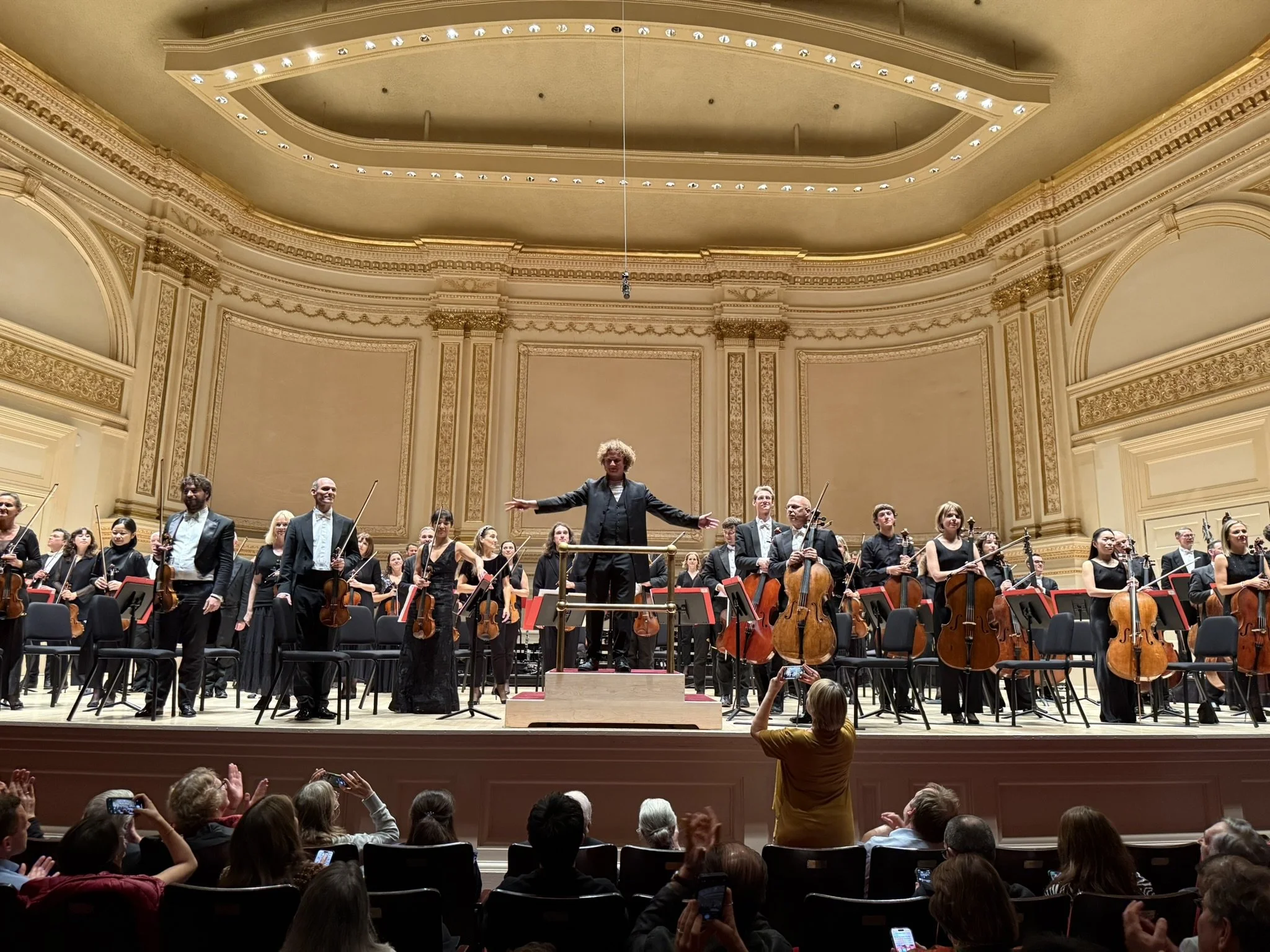Compared with the Stern Auditorium at Carnegie, Anderson Hall has a longer reverberation. Even 1st row, the sound arrives with delay and swells as it reaches the listener. Because the resonance feels prolonged, the musical shapes can sound somewhat blurred. Some people describe this as a “rich acoustic,” but true sound richness originates from the artists. Acoustics may support that richness, yet this hall demands a different kind of shaping from the musicians. Still, they skillfully adjusted the relationship between their positions on stage and the sounds they produced, and once again unfolded a richly satisfying Brahms.
Read MoreTragedies, solve by individualities/Chamber Orchestra of Europe and Yannick Nézet-Séguin at Carnegie Hall
Chamber Orchestra of Europe and Yannick Nézet-Séguin's All Brahms at Carnegie Hall on December 9, 2025.
Chamber Orchestra of Europe
Yannick Nézet-Séguin, Conductor
Veronika Eberle, Violin
Jean-Guihen Queyras, Cello
Program
ALL-BRAHMS PROGRAM
Tragic Overture
Double Concerto
Symphony No. 1
Read MoreLatvians, A Tribute to Arvo Pärt
Three Latvian musicians, Gidon Kremer, Giedrė Dirvanauskaitė, and Georgijs Osokins, had a trio recital at Zankel on 12.4.2025
Read MoreBrilliant Cello, Elena Ariza with Juilliard Orchestra
When solo cellist Elena Ariza came to the stage, the orchestra and audience erupted in excitement. After a six-minute introduction, her solo begins, in variations four and five, where she mistakes a kidnapped lady and charges forward, slamming, and then the bass continues. Elena then immerses herself in her thoughts of an imaginary lover. Strauss was singing. It sounded like Waldner's singing in Arabella. She was completely Don Quixote, her bow strokes flawless, her lyrical and passionate singing conveyed directly.
Read MoreCaroline Bembia Harp Recital
Caroline Bembia, harp in a small church, 11.22.2025 —it was my first time attending a harp recital. Unlike the sharp attack of a piano or the vibration of percussion, her sound simply emerged and spread through the space. Unlike Lincoln Center’s cold precision or the Met’s rich resonance, the natural reverberation of the church walls let me fully appreciate the harp’s unique tone and dynamic range.
Read MoreThe Marlboro Soloists at Weill Recital Hall
11.21.2025 Musicians From Marlboro at Weill Recital Hall. A chamber music group made up of young musicians associated with the Marlboro Music Festival in the United States. The festival, established in 1951, is known as a place where young and experienced musicians come together to study and perform chamber music. Selected members of the group give concerts both in the U.S. and abroad.
Read MoreNicolas Altstaedt and Thomas Dunford at Perelman Theater in Philadelphia
On November 20, 2025, I went to Philadelphia to hear Thomas and Nicolas again. The 600-seat Perelman Theater was acoustically excellent. They began with Marais, and the audience let the lute and cello tones drift naturally. Thomas’s Bach felt bright and singing, while Nicolas’s Gigue in the second half moved me to tears, painting fading landscapes with his baroque bow. Surrounded by modern buildings, I imagined the roofs of an old church. Unlike Carnegie Hall, Philadelphia’s warmth, welcoming people, and audience engagement created a deep emotional experience, revealing scenery and intimacy that made this visit unforgettable.
Read MoreMexican pianist and musicologist César Reyes
César texted me about his recital, so I went. Since I knew him, this is my 1st time seeing his piano. He is a pianist who introduces South American music in the United States. The venue was a music school hall in West Manhattan, surrounded by friends and neighbors, and the concert started at 7:30 p.m.
Read MoreThe world of Altstaedt and Dunford at Carnegie Hall
The world of Nicolas Altstaedt, Cello and Thomas Dunford, Lute's "viol x cello x lute x Bach x modern."that means all contemporaries, an intimate and stimulating dialogue between the two and the audience. The Bourbon sophistication and Bach. It continues with Pärt and then Marais.
Read MoreIan Jones, Baroque Violin at Juilliard
Ian Jones performed Baroque violin at Juilliard’s Morse Hall. Schop’s 1649 Diminutions use intricate variations; Pandolfi Mealli’s La Melana develops motifs with tempo shifts. Biber’s Sonata No. 5 contrasts silence and richness, while Fontana’s and Schmelzer’s works blend fantasia, cantabile, and technical mastery, showing early violin artistry across Europe.
Read MoreDr. Strauss's Arabella 1 at Met
Dr. Strauss's Arabella, which premiered in 1933, started its rebirth at the Met Opera on 11.10.2025. I love it the first time. The excitement and thrill of seeing the work I had been looking forward to for the first time are still fresh, even 11 years later. It's fun to see the completed Maestro vs. Met. It's also fun to see the highly anticipated new work. But the best part is being reunited with the best friends. It’s moving to see Maestro Nicholas Carter (Hamlet and Britten) with his whole body, sending life into Strauss’s music—urging the mighty Met Opera Orchestra, led by the concertmaster, Benjamin Bowman, to sing out and come alive.
Read MoreVéritable Trésor, Orchestre National de France
Christian Măcelaru and the Orchestre National de France at Carnegie Hall on 11.9.2025. The program began with Elsa Barraine’s Symphony No. 2, Voïna (War), composed in 1938, just before the outbreak of World War II. Barraine’s work captivates with its modern French transparency condensed into a stable structure.
Read MoreHendel's last Oratorio by Juilliard415
Handel’s oratorio Jephtha (1751) was performed by Juilliard415, Juilliard School’s period-instrument ensemble, on November 8, 2025, at Alice Tully Hall. This, his final oratorio, featured accompaniments to the arias that were varied and richly textured. The vocal ensemble consisted of five singers, ranging from soprano to bass, and the orchestra was full and vibrant. Even the basso continuo accompanying the recitatives was luxurious.
Read MoreKyung Wha, Chung-the rebirth and pride at Carnegie
At 77, Giant Violinist, Chung Kyung Wha once again stood at Carnegie Hall. This marked the culmination of her musical career. After a long career, a quiet flame and prayer resonated in the hearts of the enthusiastic audience gathered in the dry Stern Hall. There was no hesitation in the rise of each note, but the quiet determination and resolve that accompanied each note. It wasn't the fiery passion of her youth, but the power to burn like a quiet flame. The violin spoke of strength and kindness that transcend technique. Each time she drew her bow, the silence seemed to breathe, as if decades had passed. And after the sound faded, a prayer lingered. Kevin Kenner let each note speak as if it were a serene melody. Their breathing overlapped, creating a conversation through sound. Kenner added a soft glow to Chung's single note, and Chung responded to Kenner's silence with a prayerful echo—a dialogue that transcended.
Read MoreSymphonic Accordion, Ksenija Sidorova, Carnegie Debut
Ksenia Sidorova gave her debut recital at Carnegie Hall's Weill Recital Hall on 11.5.2025. Almost the entire program was arranged by Ksenia and friends, overflowing with respect for the works, musicians, and friends. As a result, the pieces were deeply connected, and Sidorova's world transcended time and style, unfolding through the accordion.
The program encompassed a wide range of genres, from American minimalism to Bach and numerous folk pieces, imitating a variety of instruments and voices, including organ, folk instruments, orchestra, and voice. The final piece was Schnittke's polystylism, the opera of satire and humor.
Read MoreAx and Philadelphia 50th at Carnegie Hall
At Carnegie Hall on October 31, 2025, The Philadelphia Orchestra with Emanuel Ax offered a luminous journey through Still, Beethoven, and Brahms—a concert where nature, spirit, and human expression intertwined. William Grant Still’s Wood Notes (1947), inspired by Shelby Steele’s nature poetry, shimmered with dialogue between instruments like rippling water, blending blues, jazz, and Romantic colors into warmth reminiscent of Dvořák and Sibelius. Beethoven’s Piano Concerto No. 3 followed—Ax’s 50th anniversary with the orchestra, and Yannick Nézet-Séguin’s birth year—bridging generations. Ax’s playing, breathing between each phrase, revealed Beethoven’s humanity with timeless tenderness, his cadenza rising to a Largo so intimate it brought tears. The finale’s laughter between violinist Kim and Yannick felt like Beethoven smiling from within. Ax’s encore, Schubert’s Serenade, was a whisper of love returned. After intermission, Brahms’s Symphony No. 4 unfolded as a spiritual heir to Bach’s Cantata No. 150, its sound rising and vanishing like mist. Yannick’s refined bass lines and luminous phrasing wove Still’s nature and Beethoven’s soul into Brahms’s deep serenity—a seamless celebration of Ax, Philadelphia, and the living continuum of music itself.
Read MoreSanttu-Matias Rouvali, Nordic Beethoven, Carnegie Hall Debut
The Philharmonia’s 80th anniversary concert on 10.29.2025 opened with Gabriela Ortiz’s If Oxygen Were Green, a vivid 21st-century exploration of light, water, carbon dioxide, consonance, and dissonance. Beethoven’s Piano Concerto No. 5 followed, with Víkingur Ólafsson’s playful, defiant piano weaving through the orchestra, while principal cellist Tim Hugh and the basses created tender, whispering tones that blended woodwinds and strings in intimate dialogue. Under Santtu-Matias Rouvali, the orchestra breathed with distinct shapes, colors, and intentions, alternating freedom and discipline like a modern Beethoven. Sibelius’s Symphony No. 5 unfolded with microtonal patterns, off-beat syncopations, and evolving themes; bass and cello provided a living pulse, while horns, winds, and strings conversed with microscopic detail, merging human emotion and natural sublimity. The Andante mosso recalled Beethoven’s Ninth, the third movement rose like a creature shedding its skin, and the finale’s deep cello-flute resonance and bass drum strokes created a timeless, awe-filled silence. Over two days, the warmth of cello and double bass, especially in the Sibelius waltz encore, revealed the orchestra’s capacity to transform controlled technique into simple, joyful, Karajan-like radiance.
Read MorePhilharmonia's Libestod at Carnegie Hall
The Philharmonia Orchestra celebrated its 80th anniversary with a three-week US tour, culminating in its final performance at Carnegie Hall. It was a performance that captured the breath and heart trembling of their past. The lustre of the strings, the warm breath of the woodwinds, and the brilliance of the brass—the gentle light of old recordings—represented the love, death, and salvation of Romeo and Juliet. The loneliness beneath Prokofiev's brightness, particularly the momentary silence in the second movement, seemed to stand still. And then, Kantorow's Wagner/Liszt rendition of Tristan's Death of Love from Isolde, which released this loneliness, projected the light and shadow of the Philharmonia Orchestra's lifelong love and death, forever etched in the hearts of the audience.
Read MoreSilence is the Power, Arvo Pärt's 90th at Carnegie Hall
At Carnegie Hall on October 23, 2025, Paavo Järvi led the Estonian Festival Orchestra and Choir in a luminous celebration of Arvo Pärt’s 90th birthday—a journey through sound, silence, and faith. From the solemn bell of Cantus in Memory of Benjamin Britten to the turbulent energy of Perpetuum Mobile and the haunting redemption of La Sindone, each work revealed Pärt’s struggle for spiritual truth amid oppression. The choir’s unified cry in Adam’s Lament evoked humanity’s exile and hope, while Tabula Rasa, with Midori and Hans Christian Aavik, blazed with life before dissolving into sacred stillness. An encore of Passacaglia glowed with Brahms-like warmth, followed by the serene timelessness of Fratres and the cathartic faith of Credo. The evening ended in the gentle peace of Estonian Lullaby, affirming Pärt’s profound humanity—his art born not of profession, but of silence and soul.
Read MoreThe Principals of the Israel Philharmonic Orchestra at Carnegie Hall on 10.18.2025
Israeli talks by Haim and Tchikovsky at Carnegie Hall
The third day of the Israel Philharmonic's Carnegie Hall performance. Shani is truly fascinating. First of all, his conducting looks Barenbom. He plays the final, dragging note of Tchaikovsky's 6th Symphony. The double bass is muted and plays the final note. The double bass stops. The orchestra's consciousness continues even after the sound has died down. The score specifies the length of the piece, and it ends with a fermata. He doesn't lower his baton. When Jeff, sitting next to me, applauds first, this memory becomes eternal. Shani is a conductor who unleashes everything in the concert. In one section, Shani did not time the Munich Philharmonic's principal cello, Thomas Ruge, and principal violin, Dumitru Pocitari, to enter simultaneously. Since they both enter at their own pace, the individuality of the cello and violin sections, each carrying the main melody, is highlighted. Shani's conducting brings out the artistry of each performer and unlocks unknown possibilities. Even when they are not synchronized, their individual voices eventually become a dialogue, overflowing with a single, powerful energy.
Read More
